Metamaterials are a new sort of optical material constructed from nano-engineered elements
|
|
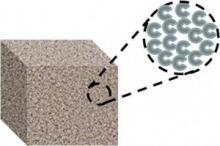 Metamaterials are built from individual elements, designed to mimic the electromagnetic response of atoms. Stacking many nano-engineered elements smaller than the wavelength of light makes new solid materials. Such materials have extremely unusual properties, such as negative refractive indices to focus light much smaller than its wavelength (super-lensing), or electromagnetic cloaking (of an object). Metamaterials are built from individual elements, designed to mimic the electromagnetic response of atoms. Stacking many nano-engineered elements smaller than the wavelength of light makes new solid materials. Such materials have extremely unusual properties, such as negative refractive indices to focus light much smaller than its wavelength (super-lensing), or electromagnetic cloaking (of an object). |
Current Work
|
We are developing a new R2R kit for large area assembly of active metamaterial nanostructures in a collaboration between the Institute for Manufacturing, Chemistry, and NanoPhotonics. |
|
|
Key papers: |
|
|
Key paper: Ibbotson et al., Sci.Rep. 5, 8313 (2015) |
|
|
|
|
|
|
|
|
|
|
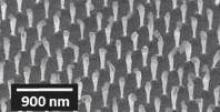 Nano-pillar array metamaterial filters Nano-pillar array metamaterial filtersUsing arrays of coated silicon or carbon nanotube pillars, optical filters with different properties can be constructed. |
|
 Flexible polymer multilayers Flexible polymer multilayersColours can be produced by absorption from dyes (as in our clothes and possessions) or the selective reflection of specific colours of light inside structures on the same size as the wavelength of light. Multilayers made from alternately stacking two transparent materials around a tenth of a micron thick give this effect, reflecting a band of colours depending on the exact layers dimensions. However such structures cannot be tuned easily. |
|
By using two different transparent rubber polymers that can be precisely coated on top of each other, we make large area sheets of double layers that can then be stacked to form multilayers in a number of ways once they have been floated free onto the surface of water. The double sheets can be cut and stacked, or folded on top of each other, or rolled up into a tube. |
|
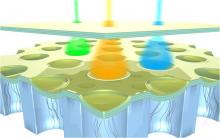 Beyond 10 double layers, the films gain a strong colour in reflection. Because the films are elastic, they can be stretched and since this changes the layer thicknesses, the films change colour. We have made red films which can be reversibly extended by >50% tuning right into the blue. Beyond 10 double layers, the films gain a strong colour in reflection. Because the films are elastic, they can be stretched and since this changes the layer thicknesses, the films change colour. We have made red films which can be reversibly extended by >50% tuning right into the blue. |
Previous work:
[4] S. Vignolini , N. A. Yufa , P. S. Cunha , S. Guldin , I. Rushkin , M. Stefi k , K. Hur , U. Wiesner , J.J. Baumberg , U. Steiner, Advanced Materials (2011); DOI:10.1002/adma.201103610
[3] G. Kamita, M. Kolle, F. Huang, J. J. Baumberg, U. Steiner, Optics Express 20, 6421 (2012)
[2] N. Gibbons, J. J. Baumberg – Phys. Rev. B 85, 165422 (2012)
[1] “Scalable Cylindrical Metallo-dielectric Metamaterials”, N. Gibbons, J.J. Baumberg, C.L. Bower, M. Kolle, U. Steiner, Advanced Materials 21, 3933 (2009). [pdf]


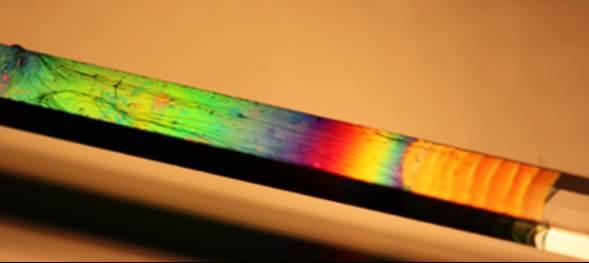
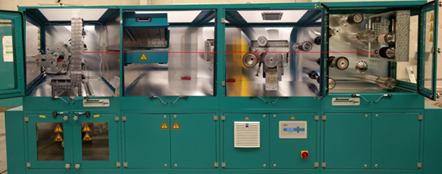 Roll-to-roll (R2R) large-area nano-assembly
Roll-to-roll (R2R) large-area nano-assembly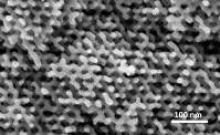 Self-assembling gyroid metamaterials
Self-assembling gyroid metamaterials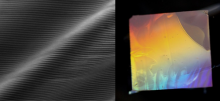 Optical woodpile metamaterials
Optical woodpile metamaterials Flexible elastic coloured mirrors
Flexible elastic coloured mirrors Roll-up scalable metamaterials
Roll-up scalable metamaterials Metallo-dielectric stacks
Metallo-dielectric stacks